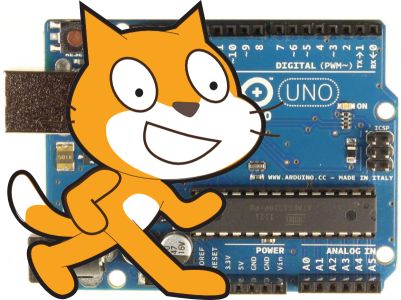Scratch, a graphical programming language developed by MIT’s Media Lab, is an excellent tool for teaching programming. [Daniel] created an Arduino Sensor Shield to interface with Scratch, allowing for real-world input to the language.
This board is a derivative of the Picoboard, which is designed for use with Scratch. Fortunately, the communication protocol was well documented, and [Daniel] used the same protocol to talk to the graphical programming environment. The shield includes resistance sensing, a light sensor, a sound sensor, and a sliding potentiometer.
The main goal was to create a board that could easily be built by DIY etching. This meant a one sided board with as few jumpers as possible. The final design, which can be downloaded and etched at home, is single sided and uses only one jumper. Detailed steps on testing the board are provided, which is very helpful for anyone trying to build their own.
This board is perfect for educational purposes, and thanks to [Daniel]’s optimizations, it can be built and tested at at home.
















You can make a respectable Scratch I/O board with just a bare arduino (or a bare anything else that can send serial data). Here’s one example: http://www.hive76.org/diy-scratch-io-board-using-arduino
Of course, if you want the light sensor to actually sense light etfc. then a little extra circuitry is involved, but that’s a judgement that will vary from user to user.
In fact, you can use any data, of any sort to generate the serial stream. For example, you could map sensor data on NimBits or Cosm to serial data that is then sent to Scratch.
Pez, thanks for the comments and for the link.
In my opinion, Scratch is strongly oriented to young children. For them is better to use something “ready to go”, without having to worry about wires, resistors, proto-boards and etc. That’s the worth of the PicoBoard (and therefore, of the Sensor Shield).
Regards
Daniel